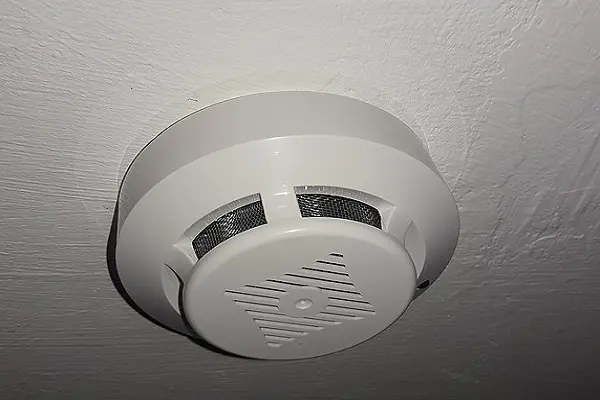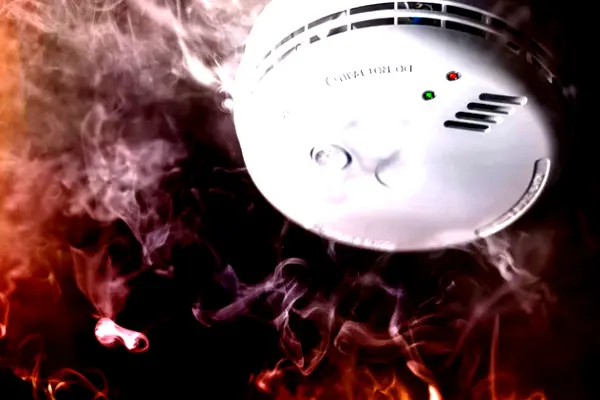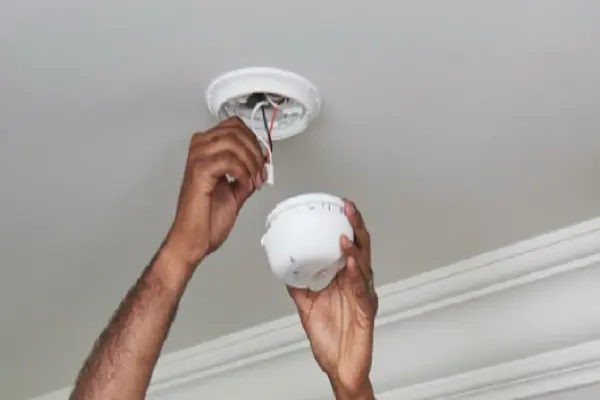Introduction
Carbon monoxide (CO) is an odorless, colorless, and tasteless gas that can be deadly if inhaled in large amounts. Carbon monoxide alarms are designed to detect the presence of this gas and alert people to its presence. However, if a carbon monoxide alarm is faulty, it can fail to detect the gas and put people at risk. In this article, we will discuss whether you can sue for a faulty carbon monoxide alarm. We will look at the legal implications of suing for a faulty carbon monoxide alarm, as well as the potential damages that may be awarded. We will also discuss the steps you should take if you believe you have a faulty carbon monoxide alarm.

What Are the Legal Consequences of a Faulty Carbon Monoxide Alarm?
The legal consequences of a faulty carbon monoxide alarm can vary depending on the jurisdiction. In some areas, the installation of a carbon monoxide alarm is a legal requirement, and failure to do so can result in fines or other penalties. In other areas, the installation of a carbon monoxide alarm is not legally required, but the consequences of a faulty alarm can still be severe.
If a faulty carbon monoxide alarm fails to detect a dangerous level of carbon monoxide in the home, the occupants may be exposed to the potentially deadly gas. In some cases, this can lead to serious injury or death. If the faulty alarm is found to be the cause of the injury or death, the manufacturer or installer of the alarm may be held liable for damages.
In addition, if a faulty carbon monoxide alarm is found to be the cause of a fire, the manufacturer or installer may be held liable for any property damage or personal injury that results from the fire.
Finally, if a faulty carbon monoxide alarm is found to be the cause of a carbon monoxide leak, the manufacturer or installer may be held liable for any environmental damage that results from the leak.
In all cases, it is important to ensure that any carbon monoxide alarm installed in the home is in good working order and is regularly tested and maintained. This will help to ensure that any potential legal consequences of a faulty carbon monoxide alarm are minimized.
How to Identify a Faulty Carbon Monoxide Alarm and What to Do About It
Carbon monoxide (CO) alarms are essential safety devices that detect the presence of this odorless, colorless, and potentially deadly gas. It is important to regularly check and maintain your CO alarm to ensure it is working properly. Identifying a faulty CO alarm and taking the necessary steps to replace it can help protect you and your family from the dangers of carbon monoxide poisoning.
To identify a faulty CO alarm, you should first check the power source. If the alarm is battery-operated, make sure the batteries are fresh and installed correctly. If the alarm is hardwired, check the circuit breaker to make sure it is not tripped. If the power source is functioning properly, you should then test the alarm. Most CO alarms have a test button that will activate the alarm. If the alarm does not sound, it is likely faulty and should be replaced.
If you have identified a faulty CO alarm, it is important to replace it as soon as possible. You should purchase a new CO alarm that is certified by a recognized testing laboratory, such as Underwriters Laboratories (UL). When installing the new alarm, make sure to follow the manufacturer’s instructions and place it in an area where it can be easily heard.
It is also important to regularly check and maintain your CO alarm. This includes testing the alarm monthly, replacing the batteries every six months, and replacing the alarm every five to seven years. By taking these steps, you can help ensure your CO alarm is working properly and protect yourself and your family from the dangers of carbon monoxide poisoning.
What Are the Risks of Not Having a Working Carbon Monoxide Alarm?
The risks of not having a working carbon monoxide alarm are significant and potentially life-threatening. Carbon monoxide is an odorless, colorless, and tasteless gas that is produced when fuels such as natural gas, propane, oil, wood, and coal are burned. It is a byproduct of combustion and can be found in any enclosed space where these fuels are burned.
Carbon monoxide is highly toxic and can cause serious health problems, including death. Inhaling high levels of carbon monoxide can cause dizziness, headaches, nausea, confusion, and even loss of consciousness. Long-term exposure to low levels of carbon monoxide can lead to permanent brain damage.
Without a working carbon monoxide alarm, it is impossible to detect the presence of this deadly gas. Carbon monoxide alarms are designed to detect the presence of carbon monoxide and sound an alarm when levels become dangerous. Without a working alarm, people may be exposed to dangerous levels of carbon monoxide without knowing it.
In addition to the health risks posed by carbon monoxide, not having a working alarm can also lead to property damage. Carbon monoxide is highly flammable and can cause fires if it accumulates in an enclosed space. Without an alarm to alert people to the presence of carbon monoxide, these fires can go undetected and cause significant damage.
For these reasons, it is essential to have a working carbon monoxide alarm in any home or business where fuels are burned. Carbon monoxide alarms should be tested regularly and replaced every five to seven years to ensure they are working properly. By taking these steps, people can protect themselves and their property from the dangers of carbon monoxide.

What Are the Warning Signs of a Faulty Carbon Monoxide Alarm?
Carbon monoxide (CO) is an odorless, colorless, and tasteless gas that can be deadly if inhaled in large amounts. Carbon monoxide alarms are essential for detecting the presence of this gas in the home and alerting occupants to its presence. It is important to be aware of the warning signs of a faulty carbon monoxide alarm so that you can take the necessary steps to ensure your safety.
The most common warning sign of a faulty carbon monoxide alarm is a chirping or beeping sound. This sound indicates that the alarm is malfunctioning and needs to be replaced. Additionally, if the alarm is not responding to the presence of carbon monoxide, this could be a sign that it is not working properly. If you notice that the alarm is not sounding when you test it or when you are exposed to carbon monoxide, it is likely that the alarm is faulty and needs to be replaced.
Another warning sign of a faulty carbon monoxide alarm is a flashing light. This light indicates that the alarm is malfunctioning and needs to be replaced. Additionally, if the alarm is not responding to the presence of carbon monoxide, this could be a sign that it is not working properly.
Finally, if the alarm is not responding to the presence of carbon monoxide, this could be a sign that it is not working properly. If you notice that the alarm is not sounding when you test it or when you are exposed to carbon monoxide, it is likely that the alarm is faulty and needs to be replaced.
It is important to be aware of the warning signs of a faulty carbon monoxide alarm so that you can take the necessary steps to ensure your safety. If you notice any of the warning signs mentioned above, it is important to replace the alarm as soon as possible.
What Are the Legal Rights of Homeowners with Faulty Carbon Monoxide Alarms?
Homeowners have certain legal rights when it comes to faulty carbon monoxide alarms. Carbon monoxide is an odorless, colorless gas that can be deadly if inhaled in large amounts. Carbon monoxide alarms are designed to detect the presence of this gas and alert homeowners to its presence.
If a homeowner discovers that their carbon monoxide alarm is faulty, they have the right to demand a replacement from the manufacturer. The manufacturer is legally obligated to provide a replacement alarm free of charge. Additionally, the manufacturer may be liable for any damages caused by the faulty alarm.
Homeowners also have the right to seek compensation for any medical expenses incurred due to carbon monoxide poisoning. If the faulty alarm was the cause of the poisoning, the homeowner may be able to seek compensation from the manufacturer.
Finally, homeowners have the right to seek legal advice if they feel their rights have been violated. An experienced attorney can help homeowners understand their rights and determine the best course of action.
In conclusion, homeowners have certain legal rights when it comes to faulty carbon monoxide alarms. These rights include the right to demand a replacement alarm from the manufacturer, the right to seek compensation for medical expenses, and the right to seek legal advice.
What Are the Benefits of Having a Working Carbon Monoxide Alarm?
Having a working carbon monoxide alarm in your home is an important safety measure that can help protect you and your family from the dangers of carbon monoxide poisoning. Carbon monoxide is an odorless, colorless gas that can be produced by burning fuel in cars, stoves, fireplaces, furnaces, and other appliances. Inhaling carbon monoxide can cause serious health problems, including headaches, dizziness, nausea, and even death.
The primary benefit of having a working carbon monoxide alarm is that it can detect the presence of carbon monoxide in your home before it reaches dangerous levels. Carbon monoxide alarms are designed to sound an alarm when the gas reaches a certain level, alerting you to the presence of the gas and giving you time to take action. This can help prevent carbon monoxide poisoning and save lives.
Another benefit of having a working carbon monoxide alarm is that it can help you identify potential sources of carbon monoxide in your home. If the alarm goes off, you can investigate the source of the gas and take steps to fix the problem. This can help prevent future incidents of carbon monoxide poisoning.
Finally, having a working carbon monoxide alarm can provide peace of mind. Knowing that you have an alarm in place that can detect the presence of carbon monoxide can help you feel more secure in your home.
In conclusion, having a working carbon monoxide alarm in your home is an important safety measure that can help protect you and your family from the dangers of carbon monoxide poisoning. It can detect the presence of the gas before it reaches dangerous levels, help you identify potential sources of carbon monoxide, and provide peace of mind.
What Are the Steps to Take When Suing for a Faulty Carbon Monoxide Alarm?
1. Gather evidence: Collect any evidence that you have that the carbon monoxide alarm was faulty. This could include receipts, warranties, or any other documentation that proves that you purchased the alarm.
2. Contact the manufacturer: Contact the manufacturer of the alarm and explain the issue. Ask for a replacement or a refund.
3. File a complaint: If the manufacturer does not respond or refuses to provide a replacement or refund, you can file a complaint with the Consumer Product Safety Commission.
4. Hire an attorney: If the manufacturer still does not respond, you may need to hire an attorney to help you sue the manufacturer.
5. File a lawsuit: Your attorney will help you file a lawsuit against the manufacturer. The lawsuit will need to include evidence of the faulty alarm, as well as any damages that you have suffered as a result of the faulty alarm.
6. Negotiate a settlement: Once the lawsuit is filed, the manufacturer may offer to settle the case out of court. Your attorney can help you negotiate a settlement that is fair and reasonable.
7. Go to trial: If the manufacturer does not offer a settlement, the case will go to trial. Your attorney will present your case and argue for a favorable outcome.

What Are the Most Common Causes of Faulty Carbon Monoxide Alarms?
Carbon monoxide (CO) alarms are essential safety devices that detect the presence of this odorless, colorless, and potentially deadly gas. Unfortunately, faulty carbon monoxide alarms are a common problem. The most common causes of faulty carbon monoxide alarms include:
1. Low Battery: Carbon monoxide alarms are powered by batteries, and when the battery runs low, the alarm may not function properly. It is important to check the batteries regularly and replace them when necessary.
2. Dust and Debris: Dust and debris can accumulate on the sensors of the carbon monoxide alarm, preventing it from detecting the gas. Regularly cleaning the alarm can help prevent this issue.
3. Excessive Moisture: Carbon monoxide alarms should be kept away from moisture, as it can cause corrosion and damage the internal components.
4. Old Age: Carbon monoxide alarms have a limited lifespan and should be replaced every five to seven years.
5. Malfunctioning Sensor: The sensor of the carbon monoxide alarm can malfunction due to a variety of reasons, including age, dust, and moisture.
By understanding the most common causes of faulty carbon monoxide alarms, you can take steps to ensure that your alarm is functioning properly and keeping your family safe.
Q&A
1. Can I sue for a faulty carbon monoxide alarm?
Yes, you may be able to sue for a faulty carbon monoxide alarm if you can prove that the alarm was defective and that it caused you harm. You may be able to sue the manufacturer, distributor, or retailer of the alarm for damages.
2. What kind of damages can I seek?
You may be able to seek damages for medical expenses, lost wages, pain and suffering, and other costs associated with the faulty alarm.
3. What evidence do I need to prove my case?
You will need to provide evidence that the alarm was defective and that it caused you harm. This could include medical records, witness statements, and other evidence.
4. How long do I have to file a lawsuit?
The statute of limitations for filing a lawsuit for a faulty carbon monoxide alarm varies by state. Generally, you will have two to three years from the date of the incident to file a lawsuit.
5. What if I can’t afford a lawyer?
You may be able to find a lawyer who will take your case on a contingency basis, meaning they will only get paid if you win your case. You can also contact your local bar association for assistance in finding a lawyer.
6. What if I don’t win my case?
If you don’t win your case, you may still be responsible for paying the legal fees of the other party.
7. What if I’m not sure if I have a case?
It’s best to speak with a lawyer to determine if you have a case. A lawyer can review the facts of your case and advise you on the best course of action.
8. What should I do if I think I have a case?
If you think you have a case, you should contact a lawyer as soon as possible. The sooner you contact a lawyer, the better your chances of recovering damages.
Conclusion
In conclusion, it is possible to sue for a faulty carbon monoxide alarm, but it is important to understand the legal process and the potential risks involved. It is also important to be aware of the potential damages that may be awarded in a successful lawsuit. If you believe that you have been injured due to a faulty carbon monoxide alarm, it is important to seek legal advice to determine the best course of action.

